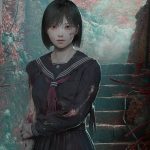The Best Final Levels In Video Games
Description

Summary
- From Celeste’s “The Summit” to Mass Effect 2’s “Suicide Mission,” these levels provide epic finales.
- Adrenaline-inducing sequences like Guitar Hero 3’s “Through The Fire and Flames” deliver unforgettable gaming experiences.
- Game developers like Bungie showcased their storytelling prowess in levels like Halo 3’s “Halo.”
No matter how good a video game is, there is something to be said for sticking the landing. Plenty of classic video games have built their legacy on the run-up to their conclusions, but when they come with the caveat of “The last level/final boss isn’t great,” it dampens the whole experience.
These games don’t have that issue. From platformers to puzzle games to Soulslikes and everything in between, these are great games that also manage to put together an equally great finale. Whether they leave players wanting more or end on such a satisfying note that they effectively close things out, these are the greatest final levels that video games have ever produced.
It probably goes without saying, but Spoilers Ahead for the games listed. However, there are no spoilers in the entry titles, so if you’re curious about what games are here but don’t want to spoil the ones you haven’t played, just avoid reading the entry text to dodge those ending spoilers.
The Summit – Celeste
Madeline And Badeline Sort It Out
Chapter 7 of Celeste, titled “The Summit,“ is quite lengthy. It’s the longest chapter in the game by quite a stretch, but that’s for good reason. It takes players through multiple small sections themed after the key mechanic in each of the previous six chapters, only with more challenging platforming tasks to overcome. Added to this is Madeline’s new ability to double dash, thanks to her newfound acceptance of “Badeline,” the personification of her depression and anxiety.
It’s a breathtaking sequence, both visually and in terms of its challenge. The Summit will push players to use every skill they’ve learned and, by the end, they’re basically expected to have mastered them. Celeste’s addictive platforming is never better than in this concluding chapter, and it wraps up one of the best platformers of the last decade with one of the best platforming levels of all time.
One Card Left To Play – Max Payne 3
Just Max, His Guns, And An Airport Full Of Soldiers
Max’s hunt for Victor and Becker leads him to Sao Paulo’s Piratininga Airport, where he is spotted almost immediately. He flees through the baggage conveyor system and is quickly embroiled in a shootout deep in the bowels of the airport. This sequence carries on through the airport lobby, into maintenance tunnels, onto a light-rail train that circles the airport, before finally leading Max to the runway and a boss fight against Becker.
“One Card Left to Play” is the perfect setting for Max Payne 3’s pulse-pounding blend of bullet-time shooting and physics-based action. The open space of the terminal gives way to the cramped hallways and unique mechanical elements of the airport’s inner workings, offering players multiple unique ways to use the game’s combat system to their advantage. The final boss fight brings everything together, as Becker hides at the top of a set of boarding stairs behind a riot shield and a grenade launcher while his soldiers swarm Max down below. Once Max takes him down, one final sequence sees Max steal Becker’s grenade launcher and fire it out of the sunroof of a moving car as he chases down Victor’s plane. It’s an incredible sequence, and easily one of the most cinematic finales of any game in Rockstar’s catalog.
The Part Where He Kills You – Portal 2
Crumbling Labs, Surprise Bosses, And Portals In Space
The way Portal 2 immediately differentiates itself from the first game is by taking Chell (and by extension, the player) out of the pre-designed labs of Aperture Science and into the facility itself, allowing them to use the Portal Gun to navigate less sterile environments. This is taken to its extreme in the game’s final level, titled “The Part Where He Kills You.”
Right from the start, players are tasked with navigating the decrepit depths of Aperture Labs. Instead of shooting portals on helpfully placed walls, they have to find an appropriate surface amid the wreckage of the run-down science facility. They do this until they encounter the game’s final boss, a surprise appearance by Wheatley, who is the AI that woke Chell up at the start of the game and led her to the Portal Gun. This boss fight is just as memorable, if not more so, than the one against GlaDOS in the first game, but it’s the grand finale that sets it apart. After players have pushed Wheatley to his limits, some paneling falls away from the roof above, revealing the full moon. To eliminate Wheatley, players must shoot a portal onto the moon and then use the vacuum of space to drag the rogue AI out of the facility once and for all. It’s a jaw-dropping moment that remains one of the most memorable conclusions to a puzzle game ever.
The Fishing Hamlet – Bloodborne: The Old Hunters DLC
As Lovecraftian As It Gets
For many, Bloodborne is the quintessential FromSoftware Soulslike experience, and that is no more valid than in the final level of The Old Hunters DLC, which is called “The Fishing Hamlet.” Throughout the game, the influence of H.P. Lovecraft is everywhere, from the multi-limbed Amygdalas hanging from the walls of Yharnam’s houses to the Celestial Minions with their giant heads, six-fingered hands, and glowing eyes. But Lovecraft’s many terrors often came from the sea, and that is precisely where The Fishing Hamlet draws its aesthetic from.
Mutated fishmen (and fishdogs) patrol the streets of this ramshackle village, and occasionally, they have a shark giant with them, which is even more horrifying than it sounds. These massive brutes are some of Bloodborne’s toughest enemies, and they move way too quickly for their size. A pair of them that corner players at the bottom of a well is a particular “highlight” of this level. The area is then capped off with a boss fight against the Orphan of Kos, one of the toughest bosses FromSoft has ever designed. Frankly, this entry would be higher up the list, but as it’s only the “final level” of a DLC, some might call it a stretch to include it at all, regardless of how fantastic it is.
Through The Fire And Flames – Guitar Hero 3
So You Think You Can Rock?
If there is any video game final level that could be considered “iconic,” one that is well-known even outside of the gaming community, the final unlocked song in Guitar Hero 3, “Through the Fire and Flames” by Dragonforce, is that level. It’s mostly known for how unbelievably challenging it is, but there’s more to it than that. This level had a deep and humbling effect on Guitar Hero fans worldwide.
By the time Guitar Hero 3 rolled around, the series was nothing new. In fact, it was massively popular on a global scale. There were countless players who were not only familiar with the series but had mastered every song in the previous two games, and Through the Fire and Flames still knocked them flat. Simply completing the song was considered a feat of extreme dedication. The few who could hit every note for a 100% score were of a superior breed. It was a short-lived fad, but the rhythm game boom of the late 2000s was a big deal, and this song was its apex.
Killing Gods – Chained Echoes
How About A Brand New Map?
Considering that it was largely made by a solo developer, Chained Echoes is a stunningly expansive homage to classic JRPGs. It tells a rich story, presents a deep, layered combat system, and features a perfect blend of retro sprite work with modern visual touches. The path to the game’s final level, “Killing Gods,” is a lengthy one, but eventually, players will gain access to a location called Magic Academy Nhysa, a place once thought lost to time. However, this isn’t just an average final level; it’s a brand-new map, and one of the largest in the entire game.
The brilliance of Magic Academia Nhysa is that it uses mechanics players have relied on throughout the game against them. Players who used the camera to peer ahead and spot upcoming enemy encounters now have to contend with mobs that hide underground. Doorways into buildings no longer lead to one- or two-room interiors, but maze-like corridors filled with poltergeists, and will let players out into another part of the map, acting as both a shortcut and a great way to get lost. Through all this, Chained Echoes’ unique brand of humor persists (like the Two Headed Wyvern enemy dropping an item called “Tiny Third Head”). It all culminates, naturally, in an epic, multi-phase nail-biter of a final boss battle against a resurrected god, which brings the entire game to a fantastic conclusion.
To The Top Floor – NieR: Automata
9S And A2 Face Their Destinies
The feud between A2 and 9S in NieR: Automata is founded on a misunderstanding. 9S believes that A2 killed his partner, 2B, when in fact, 2B had been corrupted, and would have gone mad had A2 not put her down. Sadly, 9S lacks that context and instead vows revenge on A2. However, it takes 9S a while to get there, as both androids need to make their way to The Tower, which emerged from the ground in Chapter 11, and then ascend it.
That ascension is done separately, yet thanks to an excellent example of shifting perspectives, players experience the progress of both characters simultaneously. This is at its most effective when A2 is fighting Ko-Shi while 9S is fighting Ro-Shi, a pair of boss battles against a hybrid machine that is split into two units. These units eventually merge into one and start to alternate between fighting A2 or 9S, meaning the two androids are unwittingly helping each other defeat their opponent. It’s an awesome moment that drives home the senselessness of their vendetta, yet in the end, they still have to fight each other. Players can choose whether to play as A2 or 9S in this final battle, but they should make sure to reload their save and complete the fight as both androids, as this is the only way to unlock the game’s true (and best) ending.
World 1-1 – Braid
Forget Everything You Thought You Knew
Braid is a devious little game. It was one of the original indie success stories, and it did so in large part by using familiar gaming tropes to lull players into a false sense of security, only to pull the rug out. It presents itself as “Watercolor Mario,” complete with a princess who needs rescuing from endlessly different castles. The funny thing is, the game starts with World 2, and the only gameplay twist is that Tim, the Mario stand-in, can manipulate time. He uses that power to solve environmental and object-based puzzles, and other than the odd lack of a “World 1,” Braid seems like a pretty normal puzzle platformer. No big deal, right?
The thing about time travel stories is, they always have an ace up their sleeve. World 1 is the game’s final area, and in it, everything happens in reverse, so when Tim “reverses time,” it flows normally instead. When Tim arrives in World 1-1 and races through the level, the Princess seems to be helping him along, dropping platforms to help him get across gaps. Only, that would mean she’s acting in reverse, wouldn’t it?
When Tim finally reaches her, she immediately falls asleep, and all he can do is rewind time and watch the level play out again, only with time moving forward. Suddenly, the Princess isn’t helping Tim. She’s running away from him and dropping debris from above to try and slow him down. The large knight that appeared to have kidnapped her is actually rescuing her… from Tim. That’s why she was always in another castle; she was fleeing the game’s true villain. Braid pulls off the kind of twist ending rarely seen anywhere outside classic movies, where it makes the audience, or in this case the player, rethink the entire experience leading up to that moment.
Operation 009 Exoatmosphere – The Wonderful 101
Platinum’s Underrated Gem Saves The Best For Last
Today, PlatinumGames is highly-regarded for making some of the best action games around, but back in 2013, they were still building their reputation. A major step in that process came from The Wonderful 101, which is a painfully underrated superhero game where players are the titular Wonderful 100, a team of 100 superheroes led by Wonder-Red. Players control all 100 superheroes at once, making them a sort of “horde” that all attack in unison. The whole game is an exercise in how epic a battle can possibly become, but things reach a fever pitch in “Operation 009.”
The entire Operation is a final boss battle, but it begins with players fighting a simple pair of mechanical tentacles, only more keep appearing, each wielding a new weapon. Once they’re dealt with, Jergingha emerges. Imagine a cross between Megatron’s dinobot form and a Gundam, and that’s basically this boss. He also wields a pair of giant pistols. Players duke it out with this threat and eventually have to pry him out of a dimensional rift to finish him off. Of course, it doesn’t end there. Next is an on-rails shoot-em-up sequence reminiscent of Star Fox.
All of this is taking place inside a space station, and once players exit the station, the whole thing explodes, revealing the giant Jergingha mech hidden within. This leads to a Pacific Rim-sized mech battle in outer space. Platinum continually ups the stakes in this final level, but their goofy nature always shines through. To finish things off, players are literally prompted to “Press B to Protect Earth.” The Wonderful 101 has never gotten the love it rightfully deserves, and “Operation 009” is the cherry on top of one of the most unappreciated action games of all time.
The World That Never Was – Kingdom Hearts 2
A Well-Earned Gauntlet
To even attempt an honest summary of Kingdom Hearts 2 up to the final level, “The World That Never Was,” would be virtually impossible. It’s a series with a famously complex narrative, even just in the first two games, before all the spinoffs and sequels branched things out even further. Suffice it to say that Sora goes through a lot of hardship, recruits a strong group of beloved companions from both within Disney and without, and then takes the fight to Organization 13.
As soon as players arrive, they have a swarm of Heartless to deal with, but they’re pushovers at this stage, and it feels great to carve right through them. Not long after, when they reach Twilight’s View, things get real. The rest of this level is essentially a series of boss fights against the baddest and strongest members of Organization 13, and players will have to take each of them down one by one. Along the way, they’ll add Riku to their roster, who has arguably the coolest Limit Command in the entire game. Three boss fights and one new companion later, and it’s time to take on the main event: Xemnas. This is the moment when “The World That Never Was” goes from fantastic to iconic.
The Xenmas fight is an 8-stage boss battle, a devastating trial of attrition that is guaranteed to make any player sweat (although there is a little break in the middle so they can catch their breath). Some of these phases are so elaborate that they’re essentially a new level in and of themselves. In other phases, Xemnas will pilot a robotic dragon, and Sora and Riku will pilot a machine of their own. The fight then culminates in Xenmas sending a barrage of laser beams at Sora and Riku, and players have no choice but to block them… all of them. Pull it off, and Xemnas will fall. The whole thing is, quite simply, an incredible sequence of video game brilliance capping off one of the best JRPGs of all time.




